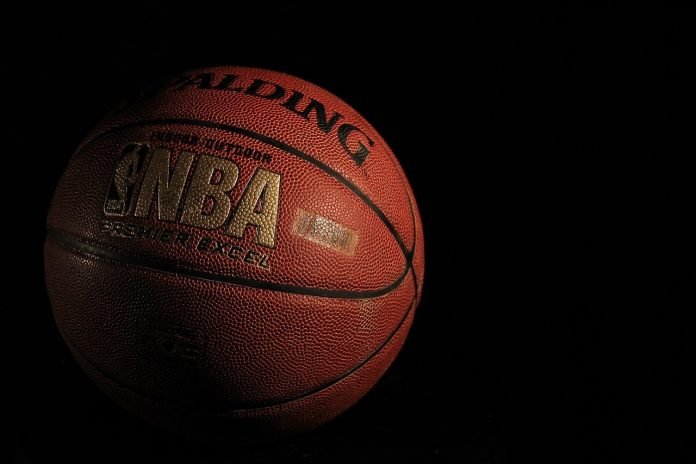
Originally conceived by Dr. James Naismith in December 1891, basketball began as a solution to the physical education challenges during harsh New England winters. The aim was to create an indoor sport that reduced the risk of football injuries while keeping students in prime physical shape.
Employing peach baskets and a soccer ball, Naismith’s creation has since evolved into the dynamic, internationally revered game we know today, with the National Basketball Association (NBA) at the forefront of its evolution.
The Dawn of Professional Basketball
The nascent chapter of professional basketball was penned in 1896 with a historic game in Trenton, New Jersey. This pivotal match laid the groundwork for the National Basketball League (NBL) to emerge two years later. As the first official professional basketball league, it assembled teams like the Trenton Nationals, New York Wanderers, Bristol Pile Drivers, and Camden Electrics, who would etch their names as champions of this emergent sport.
Despite a brief existence that concluded in 1904, the NBL’s legacy became the cornerstone for future leagues and helped to shape the trajectory of basketball, paving the way for further professionalization and the eventual rise of the NBA.
The Birth of Modern Professional Basketball
In 1937, the newly-established National Basketball League (NBL) rose from the ashes of previous attempts to professionalize the sport, heralding a new era in basketball history. Over the course of a decade, as many as 38 teams jockeyed for supremacy within this fledgling organization. Pioneering franchises like the Minneapolis Lakers, who would one day become the esteemed LA Lakers, and the Fort Wayne Zollner Pistons—now known as the Detroit Pistons—furthered the NBL’s reputation.
Other noteworthy teams included the Rochester Royals, later to be the Sacramento Kings, as well as the Buffalo Bisons who evolved into the Tri-Cities Blackhawks before finally settling as the Atlanta Hawks. The Syracuse Nationals also made their mark, eventually rebranding to the Philadelphia 76ers. The NBL’s growth and expansion laid the foundational stones for what would become the robust competitive platform of the NBA.
The Inauguration of the NBA
In an auspicious move during 1946, the formation of the Basketball Association of America (BAA) introduced a new competitor to the established NBL. Early on, the BAA made waves with teams like the Philadelphia Warriors and Minneapolis Lakers—later to become the famed Golden State Warriors and Los Angeles Lakers—seizing championship glory. However, the BAA’s tenure was short-lived; by 1949, a merger with the NBL bore the inception of today’s revered National Basketball Association (NBA).
With the merger, the NBA not only inherited the teams but also embraced the BAA’s history as its own, citing BAA’s more substantial commercial success and footprint in iconic arenas. Initially, the NBA courted 17 teams but financial instability and fluctuating fan support led to a significant contraction by 1955, leaving only eight teams standing. That same year, to galvanize the game, the Association introduced a game-changing rule—the 24-second shot clock—propelling the pace of play to new heights and with it a rejuvenating fan engagement.
The NBA’s Rise to Popularity
As the league advanced through the volatile tides of the ’50s and early ’60s, it was the towering presence of players like Wilt Chamberlain, Bill Russell, and Oscar Robertson that thrust the NBA into the national consciousness. Bill Russell’s storied tenure with the Boston Celtics is epitomized by an astonishing 11 championships in 13 seasons, setting a precedent for excellence within the sport.
Yet, it was the introduction of the 3-point line in the 1979-1980 season that marked a transformative chapter, shaping the contemporary structure and strategy of basketball. Following this pivotal shift, the charisma and unparalleled skill of Michael Jordan, alongside contemporaries such as Magic Johnson, Larry Bird, and Kareem Abdul-Jabbar, beckoned a golden era for the NBA.
Their legacies continued through icons like LeBron James and the late Kobe Bryant, who not only excelled in prowess but popularized basketball globally. Indeed, the NBA’s narrative has been perpetually guided by its stars, more so than any other sport, making it a beacon for aspiring athletes worldwide.
NBA Cheat Sheet: Fast Facts
- Players on Each Team (Roster): Teams maintain up to 17 players on their roster with a minimum of 8 players suited up for each game.
- Players on Court at a Time: Both teams have 5 active players on the court.
- Court Dimensions: The playing court measures 94 feet in length and 50 feet in width, with the rim standing 10 feet off the ground.
- Length of Game: A full game lasts 48 minutes, divided into four 12-minute quarters or two 24-minute halves, with a 24-second shot clock to promote a brisk pace of play.
- Basic Play: When Team A has the ball, they aim to score by shooting into the opponent’s hoop; upon a successful shot, Team B takes over. If Team A misses or loses the ball (a turnover), possession is contested, and both teams vie to secure the ball.
Gameplay Fundamentals: NBA Positions and Rules
In the orchestration of an NBA game, each team fields a quintet of players filling distinct positions: point guard, directing the team’s offensive play with acute court vision; shooting guard, often taking on scoring duties with sharpshooting expertise; small forward, possessing versatility in defense and scoring; power forward, who muscles through in rebounding and inside scoring; and the center, the team’s defensive anchor and a powerful presence in the paint. Contests unfurl with a tip-off as the referee arcs the ball skyward between the opposing centers, setting the stage for a tête-à-tête leap that ignites the match.
After the initial possession is claimed, teams have a mere 24 seconds—the shot clock’s decree—to orchestrate a scoring play. Should the offense secure a rebound after an unsuccessful bid, a fresh 24 seconds presents another chance to outmaneuver the defense. Following a successful basket, the rival team earns their turn to traverse the hardwood and aim for their own points.
Notably, fouls committed during a shooting attempt can lead to “continuation,” providing the player with an opportunity to complete their shot amidst the infringement. Successful shots under duress are rewarded with a bonus free throw. Embodying strategy, physical prowess, and split-second decisions, NBA games span 48 heart-racing minutes, divided into four quarters, with victory bestowed upon the team that amasses the most points, capturing the essence of the competition.
If you are keen on NBA betting, Ladbrokes is the best place to bet. Just remember to bet responsibly and enjoy the thrilling moments of one of the world’s most popular sporting leagues.


![Friday’s NBA Basketball Free Predictions [12/26/25]](https://ultimatecapper.com/wp-content/uploads/2020/01/zion-williamson-pelicans1.jpg)

